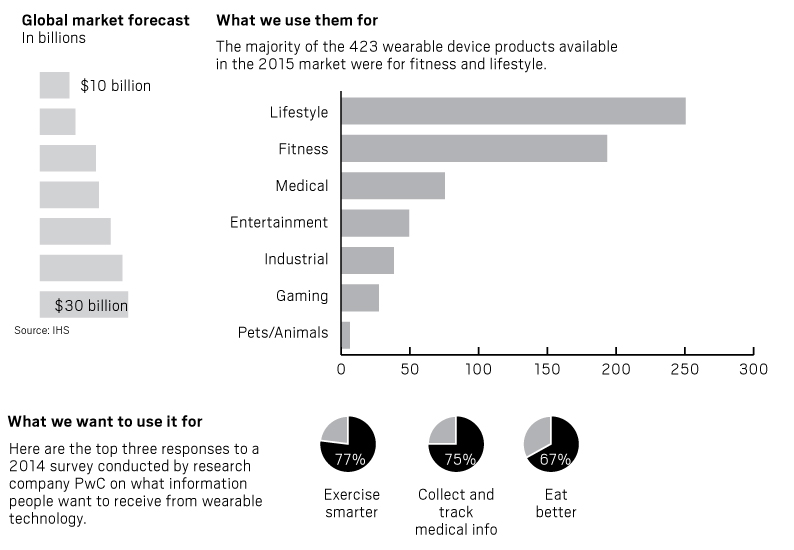Its been five years since the first wrist-worn Fitbit was released. Now researchers and companies are looking to make your clothes as smart as your phone.
The demand for smartwear is on the rise and the age of high-tech textiles and augmented reality glasses are here.
History of wearable devices
Wearable devices have been around since the 1970s, but exploded in popularity when fitness trackers were introduced.
These are a few popular wearable technology items and when they came to retail stores:

What makes a device wearable? Here are two criteria:
- Comfortably worn on the body for extended periods of time
- Independently powered and uses sensors or microcomputers to process information
The latest wearable device categories include smart watches, fitness trackers, smart glasses, body sensors, wearable cameras, location trackers, gesture devices and smart clothing.
How theyre growing
The wearables market has had higher-than-expected growth in recent years. In 2013, there were 17 million wearable device shipments and there will be an estimated 187 million units shipped by 2020.


Ready for summer?
Even though its winter and buying a bikini might not be a high priority, you can still shop for a one- or two-piece bathing suit that alerts you when to apply sunscreen. The Spinali Design is making connected clothing such as jeans that vibrate in one leg or the other to help guide you through a city and swimsuits (around $350) that can update you on your tan.
Doing well
Researchers at the University of Rhode Island are developing smart textiles, or clothes with sensors. Smart gloves could help doctors monitor patients with Parkinsons disease and other neurological illnesses. The team is working on a pair of socks with sensors to help monitor a patients gait after suffering a stroke.
Dartmouth College is developing a smart fabric that uses electronic signals to detect toxic chemicals for hazardous-material gear.
In 2017, Samsung submitted a patent that details clothing that generates energy from a persons movement to wirelessly charge a phone.
Not doing so well
In 2016, the U.S. Department of Health and Human Services released a report that said the ubiquitous nature of health apps has led to gaps in consumer privacy.
The U.S. Defense Department is currently reviewing the dangers of troops wearing exercise trackers that could give away military positions through GPS tracking. In 2016, the Defense Department banned playing the mobile video game Pokemon Go for similar reasons.
The New York Times has done extensive research on how all the data collected by devices has become a hot commodity. The amount of information collected by apps and devices is far more extensive than most people imagine, or consent to being sold.
Sources: UC Berkeley Sutardja Center for Entrepreneurship & Technology, Science Daily, Military Times, Tractica, IHS Markit Technology
[contf] [contfnew]
daily news
[contfnewc] [contfnewc]





